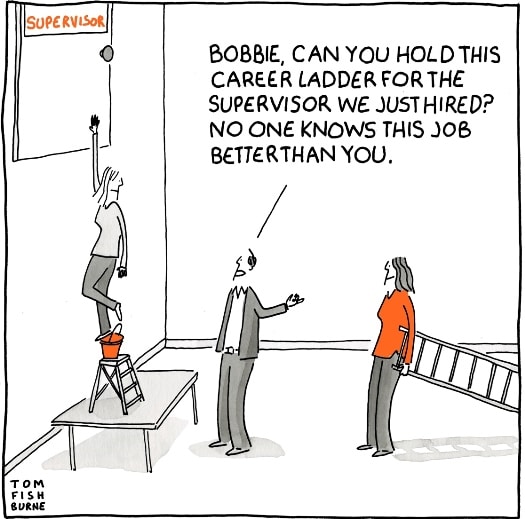Help Employees Do Their Best Every Day
(Editor’s Note: Today’s post is an excerpt from the book, “It’s All About Bob(bie) – Strategies for Winning With Your Employees” of which I am one of the contributors. It’s the third book in a thought leadership trilogy aimed at developing and retaining a competitive and engaged workforce published by The Workforce Institute at Kronos. Enjoy the post!)
The story is familiar: Bobbie has been working as a restaurant server in a hotel for several years. She wants to move into a supervisory role, but has been passed over several times by external candidates who don’t have the organizational insight she does. Bobbie and the department win when they invest in building her skills so that she’s ready for the next promotion.
Organizations and employees want the same things and they need each other, although sometimes it’s hard to see it that way. Employees want to work for great companies that they are proud of. And they are very serious about finding them. According to research from Glassdoor.com, applicants are making time to research organizations before they apply to make sure they really want to work for the company before completing an application.
Companies want engaged, productive employees. They want employees who will come to work, give their best and contribute at a high level. However, employee engagement is at a record low according to a study from Quantum Research.
The way organizations can bridge the gap is by creating a learning culture – an organizational culture that encourages employees to grow, learn and improve themselves every day. By doing so, employees feel proud that the company is setting them up for success and investing in their future. Organizations are happy to have employees that represent their brand well and deliver excellent service.
It could be said that every organization’s brand is defined by their customers. And their unique culture is driven by employees. It could be viewed as a continuous loop.
Strong organizational cultures can create positive employee engagement. Engaged employees deliver good customer service. Happy customers help create a valuable brand. Respected brands achieve results that help maintain strong culture. The first step is creating the right culture.
Creating a Learning Culture
The concept of a learning culture was first introduced by Peter Senge, Ph.D., senior lecturer at the MIT Sloan School of Management and author of “The Fifth Discipline: The Art and Price of the Learning Organization”. In the book, Senge outlines five disciplines that must be mastered in order to successfully become a learning organization.
- Systems thinking is about understanding how individual things relate as a whole.
- Shared vision allows employees to understand and buy-into the organizational vision.
- Mental models permit the organization to promote open dialogue.
- Team learning focuses on having a knowledge management structure.
- Personal mastery emphasizes individual commitment to learning.
As employees we might not have influence in all five of the disciplines that Senge mentions, but the one we do have control over is personal mastery. Whether it’s designing our own personal development plan or helping an employee with theirs, we have the ability to support learning.
Organizations that embrace learning create cultures that encourage employees to improve their skills and develop themselves for future opportunities. A learning culture provides effective training that employees want to consume. It offers development programs that give employees a sense of belonging so they will stay, ensuring the company’s pipeline of talent is filled with qualified individuals. And, creating a learning culture helps organizations maintain its competitive advantage in this fast-paced business economy.
0